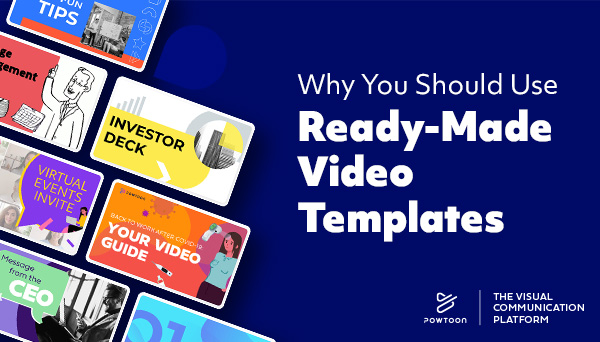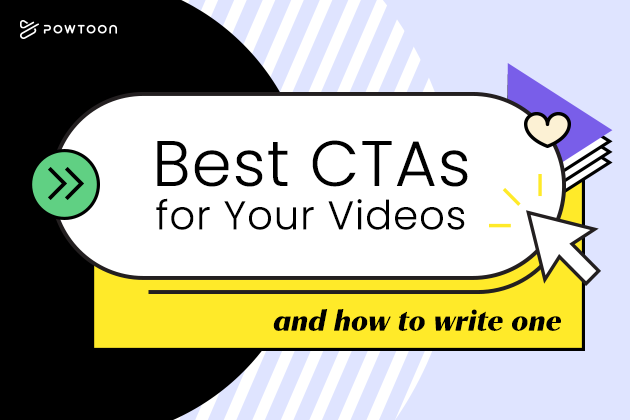
How to Repurpose Video Content for Multiple Channels
Regardless of your business’ niche, repurposing video content or any sort of marketing content should be part of your everyday marketing strategy. You might already understand the importance of incorporating video content into your Content Marketing efforts. Perhaps you fear that video content creation is a demanding process that eats up too much time and resources.
This is an understandable concern. Luckily, you don’t necessarily always need to create new videos to generate fresh video content for new audiences.
Repurposing video content can be a great way to get more mileage out of the same material. After all, research confirms that video content is more engaging than other types of content. Audiences also tend to remember video content more strongly than blog content and other such types of marketing content. So repurposing video content can pay off big time! And the best part is that you’re only limited by your creativity. Let’s go over some tips on how you can easily and successfully repurpose video content for multiple channels:
1. Repurpose Video Content Through Simple Editing
Break down longer videos into smaller clips and post them across different social media platforms. You can then post these clips separately on various social media networks, such as YouTube, LinkedIn, TikTok, Instagram, Twitter, and Facebook. Something that started as a YouTube video could be edited for use in various types of social media posts, for instance.
2. Use Video Content to Promote Itself
Create a “teaser” video to get people interested in the longer version. Teaser videos are short clips that give viewers a sneak peek of what’s to come — they usually last no more than 30 seconds and don’t reveal too much of the content. Teaser videos are great for drumming up interest in your longer video and getting more people to watch it.
3. Convert Your Video Into Different Formats for Different Channels
To some degree, understanding how to repurpose content involves understanding the technical differences between various channels. Be aware, repurposing content isn’t merely about finding new ways to use old material. It’s also about taking steps to ensure your new audiences will be able to consume your content without any glitches.
Different platforms have different file requirements when it comes to uploading videos — YouTube requires MP4 or MOV files, while other platforms like Instagram only accept square-formatted videos. If you want to repurpose the same video for multiple channels, you’ll need to convert it into the necessary format.
4. Take Advantage of Subtitles and Captions
Adding subtitles or captions to your video can help make it more accessible to a wider audience — people who don’t speak the same language as you do, those with hearing impairments, and even those who are watching in loud environments. Subtitles can also help search engine optimization (SEO) by making your content easier to find on platforms like YouTube. In general, making your new content (as well as your old content) more accessible to various audiences is a great way to cast a wide net.
5. Use B-roll Footage from One Longer Video in Multiple Shorter Videos
One of the main benefits you’ll notice when you repurpose video content involves making sure that not a single penny or minute is wasted during the video content creation process.
If you have a larger project with extra footage that doesn’t fit into the main cut, use this material to create interesting and unique new content. B-roll footage can be repurposed for multiple videos or combined with different audio clips to create completely different stories.
This is one way in which repurposing content helps you make smart use of your budget. Now, material that didn’t make it into an original piece of content isn’t wasted. It’s instead used in another context.
6. Combine Videos With Other Types of Content
You don’t have to limit yourself to only reusing and refreshing video content. Repurposing content can take many forms, including mixing different types of content. In addition to pairing blog articles with video clips or creating infographics from documentary stats, you could also create a podcast from a webinar recording. This can allow you to reach a wider audience who may prefer to consume audio content or who were unable to attend the live webinar. Additionally, you could create a slideshow from a webinar or podcast episode and add video clips to enhance the visual appeal. The possibilities for repurposing content are endless and can help you maximize the value of your original material.
Another way to repurpose your video content is by using Instagram or Facebook. Create fresh and engaging Instagram posts or Facebook posts by extracting key quotes or snippets from a video and turning them into shareable graphics, or posting shorter clips from the same video as Instagram videos to promote the longer-form content.
(Tip: When you repurpose video content, you also don’t need to strictly focus on creating new videos. For example, you can take the audio from a piece of video content and use it in a podcast episode. Or, you could transcribe parts of a video and use that content in a blog post.)
Other general tips to keep in mind when repurposing content for multiple channels include:
- Consistently update your content, customize the content for each platform, and promote it across multiple channels. This includes social media, blog posts, and more.
- Identify the original purpose of a given piece of content and brainstorm other purposes it can serve depending on the channels you publish it on. For example, on YouTube, you could post a relatively long video demonstrating how to use one of your products. Because social media best practices typically discourage posting lengthy videos, if you were planning on repurposing this video for Twitter, Facebook, or Instagram, you might edit it down to a shorter version which serves mainly to promote the product or service.
- Measure the overall performance of a video across multiple channels. This will help you better determine what types of videos yield the best results on certain channels.
- Create quality videos. Even if you thoroughly understand how to repurpose content, your efforts might not be as successful as you would like them to if the content you’re repurposing fails to make the right impression on your audience.
- Part of your business’ video strategy might involve live video at times. For example, you may participate in a live broadcast in which you answer customer questions on camera. When planning these types of broadcasts, consider how you might repurpose video content for the broadcast for use in future pieces of content.
- Develop and implement a strong content repurposing workflow. This will boost your efficiency and help you adhere to an organized video content repurposing strategy.
And, as always, experiment. The suggestions here should merely help you start thinking of ways you can optimize the value of your existing (and future!) video content. The more you’re willing to try new approaches, the more you’ll learn.
7. Turn Customer Testimonials into Video Ads
Repurposing customer testimonials into video ads is a great way to create engaging content that can help drive sales. You can take quotes from customer testimonials and use them as voiceovers or captions over the relevant video footage. This will create a powerful marketing tool that highlights the positive experiences of your customers and can help build trust and credibility with potential customers who may be hesitant to make a purchase.
Create Quality Video Content With Powtoon
Again, knowing how to repurpose content effectively is important. So is knowing how to create strong videos in the first place.
That’s where Powtoon comes in. Just as Canva simplified graphic design for those with limited experience, Powtoon allows you to easily create videos even if you have limited experience and a relatively small video production budget. Get started today!
Hannah Elishevitz
Latest posts by Hannah Elishevitz (see all)
- 3 Key Strategies to Maximize Your Market Share During the Great Rationalization - October 23, 2023
- The Top 6 Training Topics for Sales Teams in 2023 - October 12, 2023
- Sales Enablement in 2023: Key Statistics and Insights - October 9, 2023
- The Best And Newest B2B Lead Generation Strategies in 2023 - October 3, 2023







